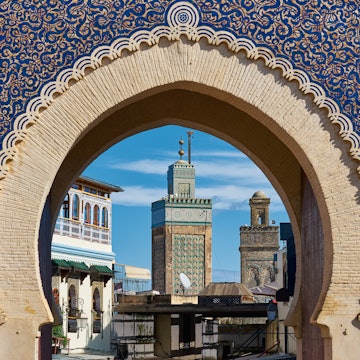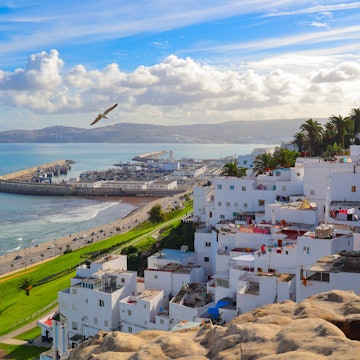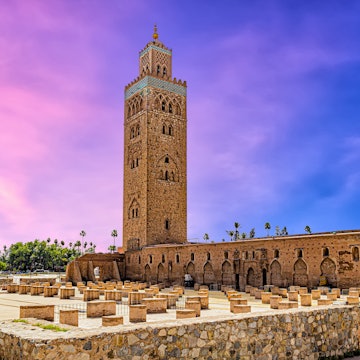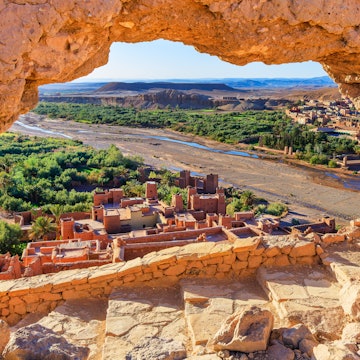

A kasbah in the High Atlas Mountains of Morocco. Alberto Loyo/Shutterstock
Morocco has been a popular destination for hikers for decades, but the list of adventure sports is expanding to include rock climbing, river rafting, paragliding and more. The High Atlas mountain range is also a great place for off-road and mountain biking, and national parks across the country call out to fans of nature and adventure.
While the High Atlas range is abuzz with hikers, bikers and rock climbers, particularly in July and August, other parts of the country are less-visited and well worth exploring. Close to Chefchaouen in the Rif Mountains, Talassemtane National Park is a vast area of magnificent ranges, gorges and valleys, carpeted in forests of cedar, cork oak and the firs it was created to protect.
Easy hiking trails through majestic mountains, remote Amazigh villages and cedar and oak forests studded with waterfalls and lakes await in little-known Ifrane National Park. You will see Barbary macaques in the forests, while there’s exceptional birdlife in the park's Ramsar-designated wetland sites.
You can drive the circuit route around Tazekka National Park near Taza in the low season, and not see another soul beyond the odd soaring Bonelli’s eagle. This park was created to protect stately cedars and the gently rising hills make it a joy for hikers.
In the south, Souss-Massa National Park is a spectacular, wild place of cliffs, sand dunes, fertile valleys, coastal steppes and forests. It’s home to rare bird and animal species, including the northern bald ibis and the scimitar-horned oryx. The Souss estuary and Massa lagoon serve as ideal birding spots, while there's superb hiking around Jebel Lkest.
If you want to spend more time in the great outdoors, put these incredible national parks on your must-visit list for Morocco.
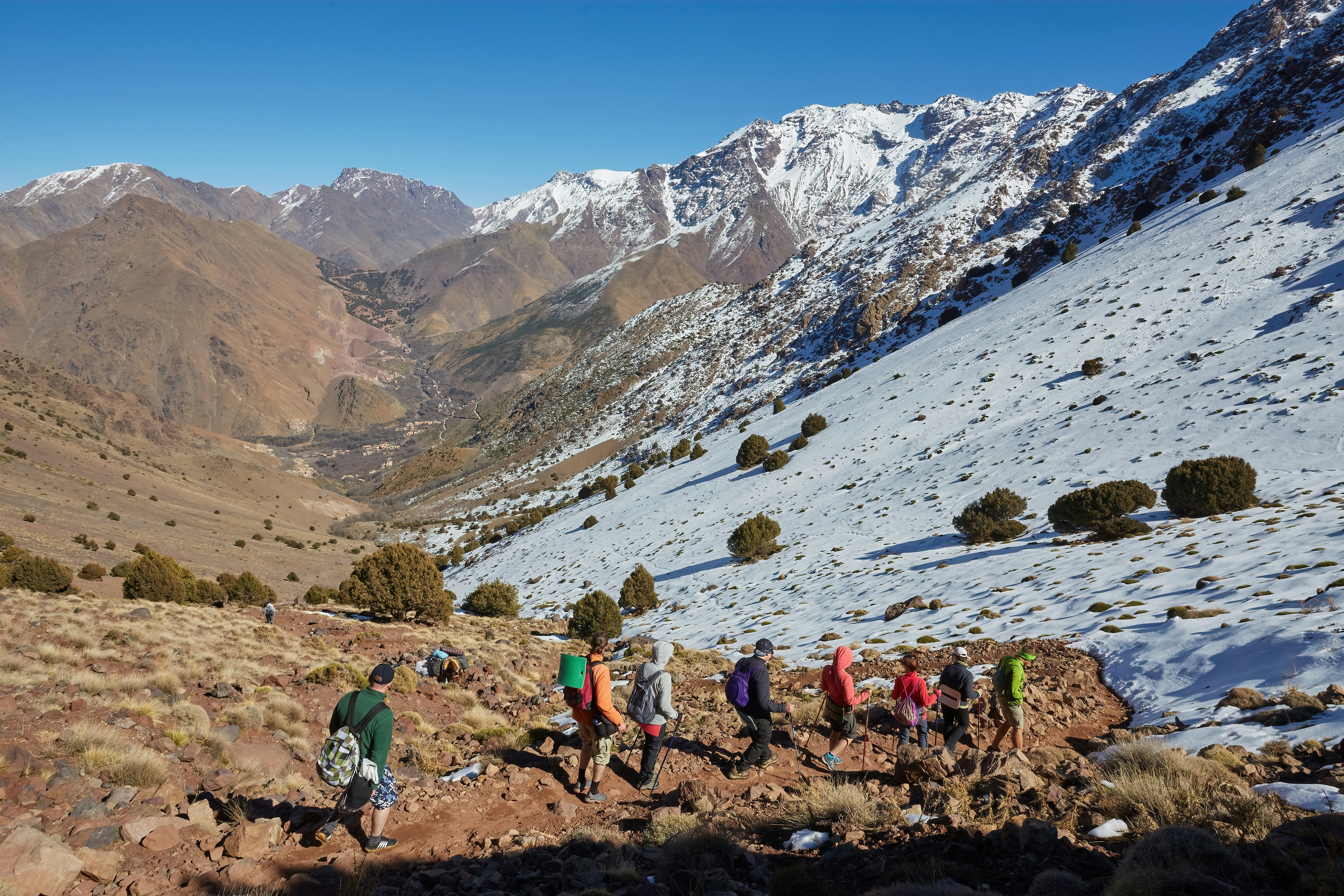
1. Toubkal National Park
Best for mountain walks
Imlil is the flagship town for Toubkal National Park. It’s the entry point for access to Aroumd and overnight treks up to Mt Toubkal, North Africa’s highest peak, and also a fantastic base for day walks in the area.
From gentle strolls to the valley’s pretty waterfall (popular on weekends with day-trippers from Marrakesh) to exhilarating day-long treks across rugged mountain landscapes that skirt the base of breathtaking peaks, there are walks here that will appeal to anyone who is reasonably fit. From the center of Imlil you can walk to the waterfall and the surrounding villages on your own, but to go any further into the mountains, you will need to walk with a guide.
A classic day-long hike in the area is the 4-hour loop walk through Aroumd village and up to the shrine at Sidi Chamharouch (2330m), which is on the route to the peak of Toubkal. Another popular walk is the loop from Imlil to Aguerssioual to Tizi n’Tamatert (2279m), finishing back at Imlil – the walk takes 4 or 5 hours, and has stunning views.
At 4167m, Jebel Toubkal is the highest peak in North Africa – and summiting this majestic mountain is high on many travelers’ bucket lists. The 27km round-trip hike is strenuous (a good level of fitness is required) but it’s not too technical (except in winter). The route can be walked in two days, but many guides recommend three days for a better experience.
If you prefer to set up your walk independently and not through a tour company, make your first port of call the Bureau des Guides D’Imlil, as everyone working for this association is a trained mountain guide.

2. Souss-Massa National Park
Best for dunes and coastal landscapes
Set 20km south of Agadir on the Atlantic coast, amid sand dunes, fertile valleys and coastal steppes, the 33,800-hectare Souss-Massa National Park is one of Morocco's most significant wildlife reserves. This is a refuge for several gazelle species, red-necked ostriches, the scimitar-horned oryx and the North African ostrich, plus rare birds such as the northern bald ibis. Captive breeding and conservation programs have helped increase these wildlife populations.
There are two ways to discover the park. You can follow 30km of dirt roads (where visitors self-drive with a park ranger), or join a prebooked 3km hiking tour with a guide, which can be arranged via the park's Rokein Information Center.
Guides will educate you about the park’s work and species as you drive, with the chance to get out of the car at viewing pavilions for a closer look at the free-roaming wildlife (some of which is only meters away). As well as birds and gazelles, look out for jackals, red foxes, gerbils, genets, mongooses, wild cats, lizards, several species of snakes, and Eurasian wild boars.
Before you start exploring, check out the small but informative information center, where there are also ostrich egg shells you can hold, plus interesting display boards on the species found in the park. There are also displays on tribal culture and how locals sustain themselves, from beekeeping and crafting to sustainable fishing and cooperatives offering women opportunities to provide an income for their households.

3. Talassemtane National Park
Best for waterfalls
Talassemtane National Park is vast, covering 580 sq km, with landscapes that include gorges and valleys, luminous waterfalls and forests of cork oak, cedar and fir. The park was established in 2004 to protect the endemic Moroccan fir tree from deforestation, and the area was designated as a UNESCO Mediterranean Intercontinental Biosphere Reserve in 2006.
The most popular hike starts in the village of Akchour, which can be reached from Chefchaouen by grand taxi. On this walk, you’ll reach a small, picturesque waterfall. If you’re feeling energetic, keep going for another hour to a larger cascade that plunges into an emerald-green pool – perfect for a refreshing dip before returning to the dam.
From the dam, you can also hike to God’s Bridge in around 45 minutes. This incredible natural arch straddles two cliffs over the Oued Farda river. There are two route options – you can take a steep trail up the mountainside to the top of the bridge, or follow the river and scramble over slippery rocks to gaze up at the bridge from below (both routes can be moderately challenging).
Before you head back to Chefchaouen, you can stop at one of the roadside stalls near Akchour for a well-earned tajine, or stay overnight at the eco-friendly Ermitage d'Akchour.
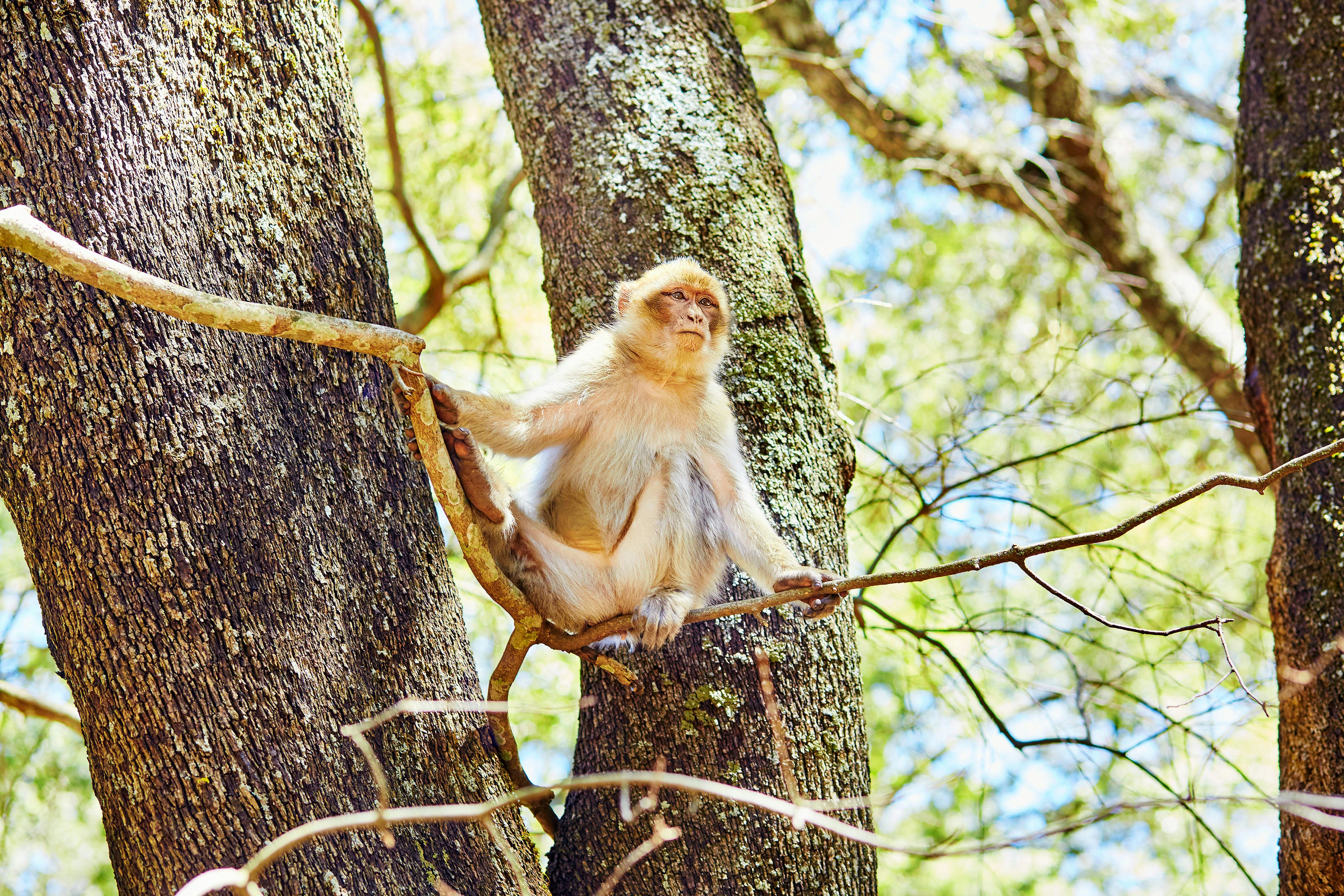
4. Ifrane National park
Best for cedar trees and varied terrain
For travelers looking to experience Morocco’s wilder side without straying too far from Fez, Ifrane’s blend of nature, altitude and stillness is hard to beat. A world away from the bustling medina, Ifrane National Park is a sanctuary of towering Atlas cedars, rolling meadows and quiet lakes.
Morocco holds 70% of the world’s remaining Atlas cedars, making this park crucial for conservation of this precious species. The forests shelter Barbary macaques, while Lake Iffer and Lake Afennourir attract migratory birds.
Trails range from easy walks to challenging hikes at altitudes of 1500m to 2200m. Routes wind through vast forests, hidden meadows and high-altitude plateaus that provide a refreshing break from the heat, especially in summer, and the terrain suits a range of fitness levels. During the winter months, visitors can go snow shoeing and skiing at Michlifen.
While you hike, guides will often pause for a picnic, and identify local flora and fauna. Whatever time of year you come, the beauty of Ifrane National Park lies in its shifting scenery – one moment you’re walking through thick groves of Atlas cedars, the next you’re skirting wide grassy clearings where shepherds lead flocks beneath open skies.

5. Merja Zerga National Park
Best for birdwatching
As any birder will tell you, the wild and blustery Atlantic coast of Morocco is prime birdwatching territory. Close to the coastal village of Moulay Bousselham, and part of the 70-sq-km national park of the same name, Merja Zerga (Blue Lagoon) is one of Morocco’s most important wetlands for migrating birds.
The park's lagoons, marshlands and reed beds attract more than 100 species of birds, providing shelter and sustenance to birds breaking the journey between Europe and Africa. From November to March, the lagoon can host as many as 30,000 ducks and 100,000 waders.
Also look out for peregrine falcons, herons and ibises. Winter visitors include greater flamingos, and this is the best place in Morocco to spot marsh owls. Contact experienced birding guide Hassan Dalil (tel: 0668434110) for a boat tour.
Keep an eye out for the koubbas (shrines) at the mouth of the river – they commemorate the 10th-century Egyptian saint, Moulay Bousselham, giving the nearby village its name. With its expanse of golden sand and sea-colored fishing boats bobbing in the harbor, the village makes a perfect stopover between Tangier and Rabat.

6. Tazekka National Park
Best for adventure sports
Towering Atlas cedars, canopies of evergreen oak, forests of fragrant thuya and gentle hills make Tazekka National Park a joy to hike through, yet the park flies under the radar of most visitors to Morocco.
Created in 1950 to protect some of North Africa’s most pristine forests, it has grown from approximately 7 sq km to 120 sq km and is filled with fascinating flora, and rare and endemic mammals and birds. Nine walking trails traverse the park, ranging from an easy 1.4km stroll to a difficult 17.3km trek – some of the trails are also suitable for mountain bikes.
Tazekka’s Gouffre de Friouato is said to be the deepest cavern in North Africa, and its cave system is probably the most extensive. First investigated in 1935, its full extent is still unknown – speleologists have explored to a depth of 300m and experts believe there are more chambers 500m below.
Unfortunately, the Gouffre de Friouato is currently closed (the reopening date is uncertain), but there are other caves to discover, including Grotte Bouslama, concealed by lofty holm oaks. It's easy to access, with a narrow entrance that widens into an expansive cavern with a gin-clear lake and beautiful formations of stalactites, stalagmites and draperies – so-called because they resemble frozen and calcified curtains. Another cave worth exploring is Grotte Chaara, with an underground river stretching for more than 7.5km.
Above ground, there are hiking and mountain-biking trails for all levels among the park’s gorges and waterfalls. The 1.4km Le Liège route, where you might spot lizards, wild boar and hedgehogs, is the shortest and easiest trail for hiking and cycling. The park’s best-known trail is the 17km La Cedraie, climbing around 500m and passing through majestic cedar forests with sweeping views over the Rif and Middle Atlas.
To explore, contact Taza native, speleologist and mountain guide Younes El Kassmi (contact.tazekkaparkclub@gmail.com), who can take you caving, cave kayaking, canyoning, mountain biking and more. He can also organize homestays if you want to linger.

Top tips for visiting national parks in Morocco
Wear clothing that blends into the natural environment where possible (avoid bright colors) so you don’t alarm the wildlife.
Don’t be fooled by images of Morocco’s blue skies and sunshine – even during the summer, temperatures in the High Atlas can drop down low. When setting out on a hike, be well prepared for all kinds of weather.
If you arrive unprepared, ask local guides or tour companies about renting gear in Morocco.
Bring binoculars to enhance the experience – while a lot of wildlife can easily be seen with the naked eye, you’ll get to see much more up close with magnification.
Visit early in the morning when the wildlife is most active and looking to feed.
Bring water and snacks, as these are not available in most parks.
Do not try to feed the wildlife.
Birdwatching is best from March to April and October to November.
Bring a zoom lens for the best photo opportunities.
This article was updated from Lonely Planet’s Morocco guidebook, published in November 2025.












